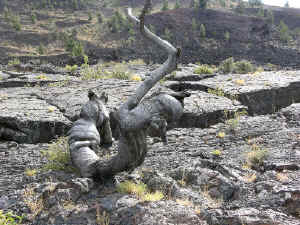OLDLIST http://www.rmtrr.org/oldlist.htm s a database of ancient trees. Its purpose is to identify maximum ages that different species can attain such that exceptionally old age individuals may be recognized. Eastern Old-List http://www.ldeo.columbia.edu/~adk/oldlisteast/ Eastern OLDLIST is a 'franchise' database of OLDLIST, a database of ancient trees and their ages. The purpose of this list is to identify and highlight maximum ages for species in eastern North America. This list will contain only well-verified or well-documentsd tree ages (see Technical Information below for further information). The oldest trees world-wide are typically conifers living in extreme environments (arid to semi-arid or elevational/latitudinal treelines, of which the oldest-known tree in the world, Pinus longaeva, lives in a combination of these extreme environments (Schulman, 1954)). Eastern North America is generally warm and moist and dominated by broadleaf species. Maximum tree ages in this region are often much less than other regions (though see ages for Thuja occidentalis, Taxodium distichum and Juniperus virginiana). As a result, maximum ages in this diverse and mostly temperate environment are often overlooked. University of Arkansas Tree Ring Laboratory http://www.uark.edu/misc/dendro/ The Tree-Ring Laboratory (TRL) was established in 1979 and concentrates on the development of exactly-dated annual tree-ring chronologies from ancient forests worldwide. These tree-ring chronologies are based on small non-destructive core samples taken from living trees, and cross-sections cut from dead logs. Tree-ring chronologies provide unique archives of environmental history, and have important applications to climatology, ecology, hydrology, seismology, archaeology, and history. The Ultimate Tree Ring Web Pages http://web.utk.edu/~grissino/ Welcome and thank you for visiting the Ultimate Tree-Ring web pages, designed to be the ULTIMATE source for information on the science of Dendrochronology. I've designed these pages to be easily understood by people at all levels of education, from elementary school students to high school students, from first grade teachers to college professors. You won't find anything fancy here - I want these pages to be readable, enjoyable, and (most of all) educational. My goal is to make available as much information about dendrochronology as I can possibly find on the Internet, from the basics of tree-ring dating, to reference and bibliographic information, to products and supplies, to books, and more! My mission was born from an overwhelming need among dendrochronologists for a permanent repository of information that was free to the public, easily understandable, and as comprehensive as humanly possible. Come back and visit from time to time to learn more about new or updated software, new educational tools, new institutions conducting tree-ring research, new publications, and more! International Tree Ring Databank http://www.ncdc.noaa.gov/paleo/treering.html The International Tree-Ring Data Bank is maintained by the NOAA Paleoclimatology Program and World Data Center for Paleoclimatology. The Data Bank includes raw ring width or wood density measurements, and site chronologies (growth indices for a site). Tree-ring measurement series from other parameters are welcome as well. Reconstructed climate parameters, including North American Drought, are also available for some areas. Over 2000 sites on six continents are included. |
 Limber Pine, Craters of teh moon National Monument - reported to be 2300
years old - photo by Edward Frank
Limber Pine, Craters of teh moon National Monument - reported to be 2300
years old - photo by Edward Frank